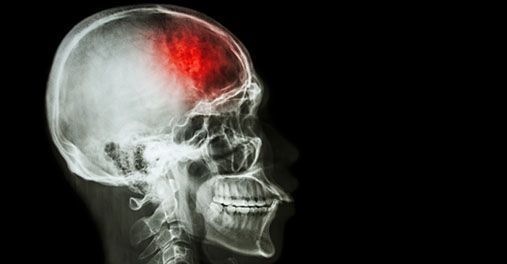About the group
We perform basic research in vascular biology with the aim to understand and solve outstanding problems in cardiovascular medicine. In particular, circulating factors which are components of the coagulation and fibrinolysis system are being investigated.
This research is relevant for diseases such as atherosclerosis, myocardial infarction, stroke and thrombosis. The mechanisms involved are also relevant for allied processes such as tissue repair, fibrosis, host defense, inflammation and cancer.
Link to ORCID
Sandip Kanse (0000-0003-0782-9957) - ORCID
Collaborations
- Jonas Emsley, Nottingham, UK (Protein structure function, X-ray crystallography)
- Christina Jern, Gothenburg, Sweden (Stroke diagnosis and GWAS)
- Paul Declerck, Leuven, Belgium (Serine protease inhibitors and monoclonal antibodies)
- Eric Camerer, Paris, France (Protease-activated receptors)
- Denis Vivien, Caen, France (Mouse models of stroke)
- Michael Etscheid, Langen, Germany (FSAP biochemistry and thrombosis)
- Christoph Reichel, Munich, Germany (Proteases and leukocyte transmigration)
- Trygve Braun Leergaard, Oslo, Norway (Rodent neuroanatomical mapping)
- Per Morten Sandset, Oslo, Norway (Thrombosis)
- Geir Åge Løset, Oslo, Norway (Phage display)
- Kristi Bache, Oslo, Norway (Stroke-Diagnosis)
Challenges
Cardiovascular diseases are a major cause of mortality and morbidity worldwide. The overall goal of this research is to reduce the level of cardiovascular disease by developing new diagnostic methods and treatment strategies. Being at the interface between many inter-related processes the coagulation and fibrinolysis system will provide many possibilities for their eventual manipulation. By gaining a better mechanistic understanding of these circulating factors, we want to realize our goals.
Recent achievements
A SNP in the gene encoding for FSAP is a risk factor for atherosclerosis and stroke. We have performed numerous studies to understand the functions of FSAP with respect to neointima formation (Kannemeier et al, FASEB J, 2004; Sedding et al, J Exp Med, 2006; Daniel et al, J Thromb & Haem 2016) arteriogenesis (Herold et al, Am J Trans Med, 2017) and angiogenesis (Uslu et al, Cells, 2019). FSAP-/- mice exhibit a poor outcome after induction of stroke (Joshi et al, Eur J Neurosc 2015) and are protected against thrombosis (Subramaniam et al, Thromb & Haem 2015).
Furthermore, we have identified a novel substrate for FSAP in the circulation, tissue factor pathway inhibitor, complement proteins and fibrinogen, which will help to elucidate its function (Kanse et al, Arterioscler Thromb Vasc Biol, 2012 and J Immunol, 2012; Etscheid et al, Biochim Biophys Acta, 2018).
We have expanded on the concept of tissue injury-mediated release of histones activating pro-FSAP to the activation of pro-FSAP by artificial surfaces (Sperling et al, ACS Appl Mat & Int, 2017), by neutrophil extracellular traps (NETs) (Grasso et al, 2018) and peptides identified by phage display (manuscript in preparation).
Using phage display and synthetic peptide substrate libraries we have characterized the substrate specificity of FSAP and have developed new selective substrates (Kara et al, Thromb & Haem 2017). We have now extended these studies to synthetic peptide substrate libraries made of non-standard amino acids (Rut et al, Thromb Res 2019). This specific and sensitive FSAP substrate was used to develop a quantitative method to measure the generation of active FSAP in human plasma (Etscheid et al, 2022).
We have established methods to produce recombinant FSAP domains in bacteria for detailed structure-function studies (Nielsen et al, Scientific Reports, 2019).
We have established the role of protease-activated receptors (PARs) in mediating the cellular effects of FSAP (Byskov et al, Atherosclerosis, 2016 and Byskov et al, FASEB J, 2020).
Recombinant serine protease domain of FSAP was found to improve the outcome of ischemic stroke in mouse models (Kim et al, 2022, FASEB J) and we have identified a specific peptide sequence that can be used to activate the zymogen form of FSAP and mimic the natural activator histone (Berge-Seidl et a al, 2022).
We have discovered a new function for FSAP in liver fibrosis by investigating its expression in liver fibrosis, and by determining the correlations of SNPs in the gene encoding for FSAP with the severity of liver fibrosis. FSAP-/- mice exhibit enhanced liver fibrosis. (Roderfeld et al, Liv Int 2009; Wasmuth et al, Hepatology, 2009, Borkham-Kamphorst et al, 2013).
We have characterized the pathways and transcription factors regulating the expression of FSAP in hepatocytes (Leiting et al, J Biol Chem, 2015) and have identified novel genes involved in this regulation through GWAS studies (Olsson et al, J Thromb & Haem 2017)
Projects
- The influence of FSAP on the outcome of stroke in mouse models. Lab member: Jeong-Yeon Kim. External cooperation partners: Trygve Braun Leergaard, Oslo, Norway.
- Structure-function studies and protein biochemistry of FSAP. Lab members: Sai Priya Sarma Kandanur and Aumkar Logendran. External cooperation partners: Jonas Emsley, Nottingham, UK
- Characterization of the interaction partners and receptors of FSAP in the circulation and on cells. Lab member: Kristina Byskov. External cooperation partners: Michael Etscheid, Langen, Germany and Eric Camerer, Paris, France.
- Use phage display library to identify peptides that modulate FSAP activity. Lab members: Sebastian Berge-Seidl. External cooperation partners: Geir Åge Løset, Oslo, Norway.
Publications
Link to PubMed: kanse s - Search Results - PubMed (nih.gov)
